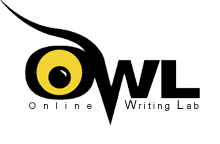




Peer reviewed sources (also known as scholarly sources) are:
While you can find scholarly articles through general search engines, databases contain a feature where you can narrow your results to only scholarly articles.
 Forming your Search String
Forming your Search StringThe more complicated your question, the less likely a search engine can understand it. To get the best result, identify keywords and like terms to create a search string.
Example research question: What is the impact of biofuel production on indigenous communities in North America?
Keywords: biofuel production, indigenous communities, North America
Like terms can include synonyms and also examples of your keywords. If you don't get results from searching your keywords, it doesn't mean that the research doesn't exist. It could mean that the researcher used different language to describe the same topic
Search strings connect your keywords and like terms together for the best results.
Too many results? Use AND to narrow results
biofuel production AND indigenous communities AND North America
Too few results? Use OR to broaden results
biofuel production OR renewable diesel production AND indigenous communities OR First Nations AND North America OR Mexico OR United States OR Canada

1. Read the abstract
An abstract is a summary of the article, and will give you an idea of what the article is about and how it will be written. If there are lots of complicated subject-specific words in the abstract, the article will be just as hard to read.
2. Read the conclusion
This is where the author will repeat all of their ideas and their findings. Some authors even use this section to compare their study to others. By reading this, you will notice a few things you missed, and will get another overview of the content.
3. Read the first paragraph or the introduction
This is usually where the author will lay out their plan for the article and describe the steps they will take to talk about their topic. By reading this, you will know what parts of the article will be most relevant to your topic!
4. Read the first sentence of every paragraph
These are called topic sentences, and will usually introduce the idea for the paragraph that follows. By reading this, you can make sure that the paragraph has information relevant to your topic before you read the entire thing.
5. The rest of the article
Now that you have gathered the idea of the article through the abstract, conclusion, introduction, and topic sentences, you can read the rest of the article!
To review: Abstract → Conclusion → Introduction → Topic Sentences → Entire Article
Used with permission from the Undergraduate Library, University of Illinois at Urbana-Champaign for use or adaptation of materials.

Gordon College is New England’s top Christian college, located on the North Shore of Boston in Wenham, MA.
Gordon College | 255 Grapevine Road, Wenham, MA 01984 | Telephone 978.927.2300